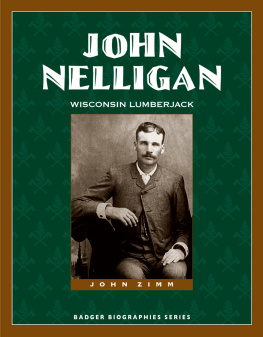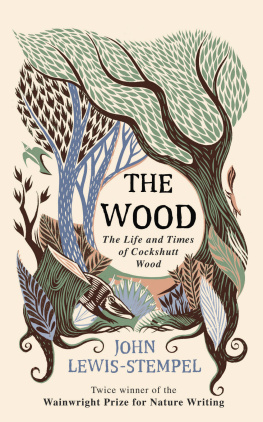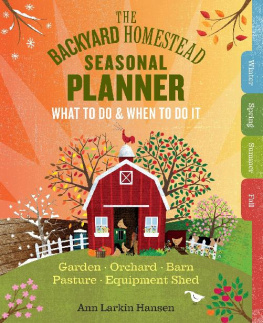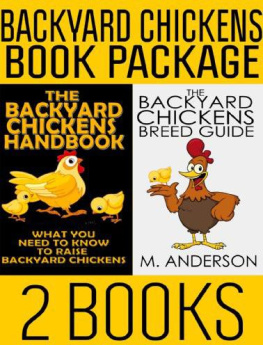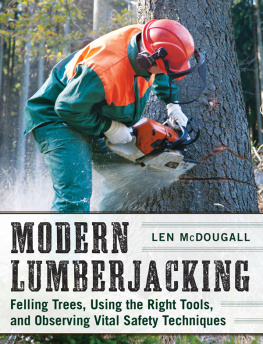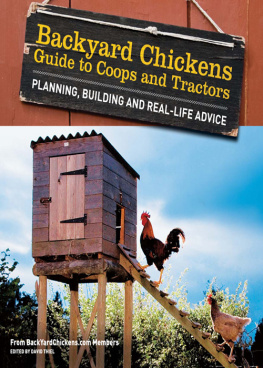Frank Philbrick - The Backyard Lumberjack
Here you can read online Frank Philbrick - The Backyard Lumberjack full text of the book (entire story) in english for free. Download pdf and epub, get meaning, cover and reviews about this ebook. year: 2006, publisher: Storey Publishing, genre: Detective and thriller. Description of the work, (preface) as well as reviews are available. Best literature library LitArk.com created for fans of good reading and offers a wide selection of genres:
Romance novel
Science fiction
Adventure
Detective
Science
History
Home and family
Prose
Art
Politics
Computer
Non-fiction
Religion
Business
Children
Humor
Choose a favorite category and find really read worthwhile books. Enjoy immersion in the world of imagination, feel the emotions of the characters or learn something new for yourself, make an fascinating discovery.

- Book:The Backyard Lumberjack
- Author:
- Publisher:Storey Publishing
- Genre:
- Year:2006
- Rating:4 / 5
- Favourites:Add to favourites
- Your mark:
- 80
- 1
- 2
- 3
- 4
- 5
The Backyard Lumberjack: summary, description and annotation
We offer to read an annotation, description, summary or preface (depends on what the author of the book "The Backyard Lumberjack" wrote himself). If you haven't found the necessary information about the book — write in the comments, we will try to find it.
The Backyard Lumberjack — read online for free the complete book (whole text) full work
Below is the text of the book, divided by pages. System saving the place of the last page read, allows you to conveniently read the book "The Backyard Lumberjack" online for free, without having to search again every time where you left off. Put a bookmark, and you can go to the page where you finished reading at any time.
Font size:
Interval:
Bookmark:
THE BACKYARD
Lumberjack

Lumberjack
The ULTIMATE GUIDE to FELLING, BUCKING, SPLITTING & STACKING
Frank Philbrick & Stephen Philbrick

The mission of Storey Publishing is to serve our customers by publishing practical information that encourages personal independence in harmony with the environment.
Edited by Deborah Balmuth and Carleen Madigan Perkins
Cover design by Kent Lew
Interior design and layout by Vicky Vaughn
Cover photographs Adam Mastoon
Interior photography credits found on page 160
Color illustrations by Dan Thompson. Additional illustrations by Gregory Wenzel, except on page 120 Elayne Sears.
Indexed by Christine R. Lindemer, Boston Road Communications
Copyright 2006 by Frank Philbrick and Stephen Philbrick
All rights reserved. No part of this book may be reproduced without written permission from the publisher, except by a reviewer who may quote brief passages or reproduce illustrations in a review with appropriate credits; nor may any part of this book be reproduced, stored in a retrieval system, or transmitted in any form or by any means electronic, mechanical, photocopying, recording, or other without written permission from the publisher.
The information in this book is true and complete to the best of our knowledge. All recommendations are made without guarantee on the part of the author or Storey Publishing. The author and publisher disclaim any liability in connection with the use of this information. For additional information please contact Storey Publishing, 210 MASS MoCA Way, North Adams, MA 01247.
Storey books are available for special premium and promotional uses and for customized editions. For further information, please call 1-800-793-9396.
Printed in Hong Kong by Elegance
10 9 8 7 6 5 4 3 2 1
LIBRARY OF CONGRESS CATALOGING-IN-PUBLICATION DATA
Philbrick, Frank.
The backyard lumberjack : the ultimate guide to felling, bucking, splitting & stacking / Frank Philbrick and Stephen Philbrick.
p. cm.
Includes bibliographical references and index.
ISBN-13: 978-1-58017-634-7; ISBN-10: 1-58017-634-8 (pbk. : alk. paper)
ISBN-13: 978-1-58017-651-4; ISBN-10: 1-58017-651-8 (hardcover : alk. paper)
1. Tree felling. 2. Woodlots. 3. Fuelwood.
I.Philbrick, Stephen.
II. Title.
SD538.P49 2006
634.98dc22
2006015207
To Deb, for coming across the road; Ma and KT, for the
patience and support; and B&C, without whom
F. P.
To cold winters,
hot stoves,
stout maple,
spry sons
S. P.


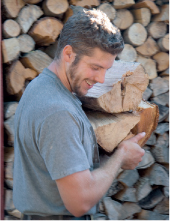
THOREAU ONCE NOTED that firewood warms you twice, once when you split it and once when you burn it. If you still feel that way after felling your own trees, bucking them up, and then splitting and stacking all the wood, write me and Ill pull my copy of Walden out of the ash heap. This is a process that can warm and fortify your body and soul a hundred times over. It is also a connection to our past and to skills and strengths most people never discover or use. Think of the intimacy early settlers must have had with their axes, adzes, bucksaws, and mauls. Everyone on the frontier must have been able to handle these items as adroitly as todays lumberjacks do their chain saws. The clearing of land was the culture, and the ax its first ambassador.
The woods we have spent our time in are of three basic types, each common to New England: upland hardwood forests, upland evergreendominated forests, and swampy areas (from the last, we expended a fair amount of time snaking what hardwoods we could). Good burning wood is much scarcer in the latter two environs, and there is more work to get it out. Red and swamp maples are the main quarry in the wet conditions; ash, beech, yellow and white birch, maple, and cherry grow well in sections side by side with hemlock and white pine on our hilltop.
We would not have spent thousands of hours in the woods if we hadnt enjoyed them. More than that, they allowed us, both together and separately, to think and speak in an uncommonly free and honest manner. To this I would add that we have each observed things in nature that one would not normally associate with the keening snarl of a chain saw. My brother Charlie (Tood from here on out; dont ask) and my father still speak of the paper wasp they saw laying eggs in the end grain of some maple. The delicate, corset-waisted, bottle-blue creature positioned itself like a well-drilling rig and inserted an impossibly long, flimsy needle right into what must have been some sort of microtubule in the sapwood. Whatever it was that hatched, they saw its genesis.
One evening that could have been any stark fall evening, Dad got an odd feeling in his gut and turned to face a black bear for a long moment. After looking at the noisy intruder, the bear eventually turned and took up its activities where it had left off. Dad returned to his civilized mind from the animal place such a sight had sent him.
I was once stopped short by the stunning, blissful forensics of a late-night murder, or meal, depending on your allegiance. Knee-deep in snow on the way to the woodlot I saw the businesslike progress of a chipmunks tracks. As they were going my way, I paid some attention. Soon enough the spacing of the tracks shortened up and then described an abrupt buttonhook. Not three steps back the way hed come there were twin angel wings in the snow. Two long, serrated crescents enfolded the delicate tracks and no more. Actually seeing and understanding the evidence of such an encounter warmed a visceral but deductive part of me. The silent, incontrovertible evidence of an owls dimly foreseen attack chilled me in just the opposite way. Everyone has had that same moment in which he or she glimpsed, but radically underestimated, impending tragedy. Gaining confirmation that this sickening moment has its roots threaded honestly in the natural world was reassuring to someone afraid of having all animal influence bleached out by civilization.
During the fall we spent writing this book, Dad got ill, first with pneumonia, then bronchitis, then stubborntosis, and finally back to pneumonia. Tood had been talking to Dad on the horn and worrying that he was going to make things even worse for himself by trying to work right through his illness. We decided that we both had to go home and get the firewood in. I knew how hard it was for Dad to need help; in fact, I was sure it was the hardest part of the illness. Tood and I hadnt had the chance to spend real time together in a long while, and in retrospect, we may never be living under the same roof again. Everyone was looking forward to the time together for different reasons.
The year before, Dad had felled the two dozen trees we would need, so it remained to snake them out of the woods, buck them up, split them, and stack them. Over the course of two and a half days, Tood and I ran saws and split with mauls almost nonstop. Both of us have gone through long periods of our lives with calluses lining our hands, but we had each softened up considerably in the months preceding this unexpected trial. By the end of the third day I had sweat out every beer Id bought in the city, and Tood had torn rows of neat ovals off both hands. The memory of the fingers is fiercely loyal, but very short-term.
Next pageFont size:
Interval:
Bookmark:
Similar books «The Backyard Lumberjack»
Look at similar books to The Backyard Lumberjack. We have selected literature similar in name and meaning in the hope of providing readers with more options to find new, interesting, not yet read works.
Discussion, reviews of the book The Backyard Lumberjack and just readers' own opinions. Leave your comments, write what you think about the work, its meaning or the main characters. Specify what exactly you liked and what you didn't like, and why you think so.

